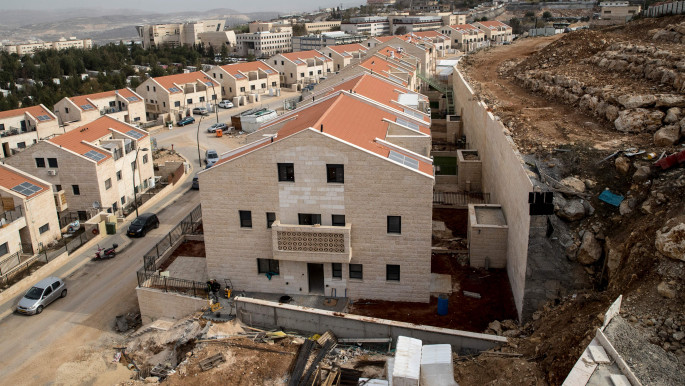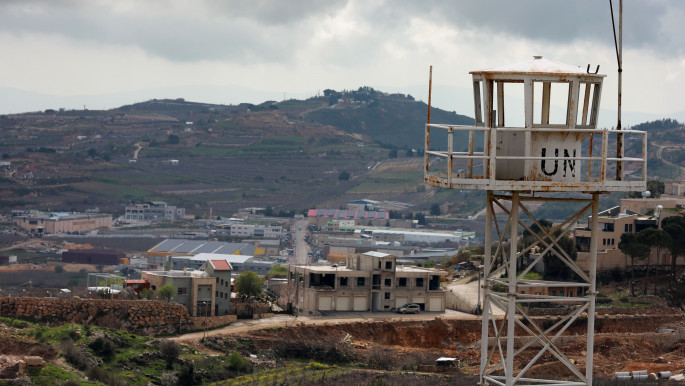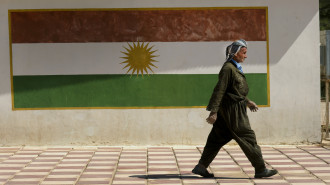The 1967 Arab-Israeli War and the making of today's Middle East
In the first Arab-Israeli war of 1948, Israel gained control of 77 percent of the territory of British mandate Palestine, deliberately expelling nearly 800,000 Palestinians from their homes. The remaining 23 percent of Palestine became the West Bank, annexed by Jordan, and the Gaza Strip, administered by Egypt. Both these areas were to fall under Israeli control in 1967, along with Egypt's Sinai Peninsula and Syria's Golan Heights.
The total area occupied by Israel in 1967 was more than four times the territory it had captured in 1948.
The effects of the war are felt throughout the Middle East to this day. They have dramatically changed the nature of the Arab-Israeli conflict, the discourse around it, and the goals of the Arab nations vis-à-vis Israel.
While it was the armies of Jordan, Egypt, and Syria which were defeated by Israel, it was the Palestinians who were most affected by the defeat.
 |
|
A change to the meaning of peace
Prior to the 1967 war, the Arab states refused to recognise Israel. The brutal expulsion of hundreds of thousands of Palestinian refugees by Israel was still fresh in the mind of the Arab public and the existence of Israel was rejected by nearly all Arabs.
Attempts to bring about peace by external powers focused on the land that Israel had captured in the 1948 war and the refugees who had lost their homes there.
For example, in 1962, US President John F. Kennedy put forward a peace plan which would allow some Palestinian refugees to return to their homes in Israel while others would be resettled in Arab countries or outside the region. This plan was rejected by Israeli Prime Minister David Ben Gurion, who said that it was a greater danger to Israel than "Arab dictators and armies".
In 1969, two years after the 1967 defeat, Arab leaders meeting in Khartoum issued a resolution reaffirming three noes – no peace with Israel, no recognition of Israel, and no negotiations with it.
 |
|
| Read also: 'Our cause is not for sale': Palestinians unanimously reject US-Bahrain 'Deal of the Century' summit |
It didn't take long, however, for the Arab states to make overtures to Israel and begin negotiating on a "land-for-peace" basis.
In 1979, Egyptian President Anwar al-Sadat signed a peace treaty with Israel under which Sinai was returned to Egypt – with heavy restrictions on the amount of military personnel and equipment Egypt could deploy there – in exchange for Egyptian recognition of Israel and an end to the state of conflict between the two countries.
Oslo Accords strengthen Israel
In 1988, Yasser Arafat declared a Palestinian state and said that Palestinians had "accepted the existence of Israel". This in effect signalled a change in Palestinian goals. The state that was declared was to be in the West Bank and Gaza only.
The land within Israel's 1948 boundaries were no longer a goal and five years later the Oslo Accords were signed. While under the Oslo Accords' Declaration of Principles the PLO recognised Israel as a state and while Israel simply recognised the PLO as a partner for negotiations, it did not recognise the right of Palestinians to self-determination or a state.
Read also: Israel attempting to 'wipe out' Palestinian identity in East Jerusalem: report
By this time, the Arab states which Israel defeated in the 1967 war were not only unwilling to help the Palestinians, they were in no position to. Before the 1967 war, the Arab states received military hardware from the Soviet Union, but the latter's decline and collapse meant that this support was no longer available. The US continued to provide Israel with modern weapons and its status as a nuclear weapons state was evident by the mid-1980s.
 |
By this time, the Arab states which Israel defeated in the 1967 war were not only unwilling to help the Palestinians, they were in no position to |  |
What this meant for the Palestinians is that they were negotiating with a much more powerful entity and had no effective external support. Israel had the upper hand in negotiations, which were only about the territory occupied in 1967. Although Israel's occupation was illegal under international law, there was no real pressure for Israel to withdraw and it could always count on a US veto on any UN resolution regarding the occupation.
The Oslo Accords placed Palestinian cities and towns in the West Bank under Palestinian rule but kept Jerusalem, the Israeli settlements, and the Jordan Valley, which formed the West Bank's eastern border under Israeli rule.
What Oslo did was to effectively relieve Israel of the burden of controlling hostile and restive Palestinian population centres while allowing it to keep control of most of the land of the West Bank.
The failed Camp David talks of 2000, which were supposed to negotiate the final status of the West Bank and Gaza would have resulted in a Palestinian entity physically divided, surrounded by Israel, forbidden from having an effective military, and subject to incursions by Israeli forces. The Israeli settlements and the Jordan Valley, as well as the West Bank's major corridors would have stayed under Israeli control. It was far from being a sovereign, viable state.
 |
Although Israel's occupation was illegal under international law, there was no real pressure for Israel to withdraw and it could always count on a US veto on any UN resolution regarding the occupation |  |
Today, Israel remains firmly in control of most of the West Bank and also controls access to the Gaza Strip.
The population of Israeli settlements in the West Bank has quadrupled from 111,600 in 1993 to 400,000 today. The United States, never an impartial mediator, has gone from brokering peace to imposing terms on the Palestinians on behalf of Israel.
US President Donald Trump has cut off all aid to the Palestinian Authority and recognised Jerusalem as Israel's capital. The US ambassador to Israel recently said that Israel "has the right" to annex settlements in areas of the West Bank.
 |
|
| The population of Israeli settlements in the West Bank has quadrupled since the Oslo Accords were signed [Getty] |
Forgotten refugees
In all the negotiations between the Palestinian Authority and Israel the issue of refugees has been given low priority.
The 1967 occupation of the West Bank and Gaza made all negotiations between Israel and the Arabs about "land for peace". Off the table was the land that Israel had taken from the Palestinians in the 1948 war, and the right of Palestinian refugees to return.
The number of Palestinian refugees has grown from 800,000 in 1948 to more than four million today. They make up more than half of the Palestinian population but what the 1967 war has effectively done is to take their issue out of the limelight.
Many of them remain in refugee camps in the countries surrounding Israel and Palestine, deprived of basic rights such as the right to work [in Lebanon] or becoming victims of the conflicts that have broken out in the Arab world [in Lebanon and Syria]. Their situation has recently been made worse by the US cutting funding to UNRWA, the UN agency which oversees their basic needs.
 |
| Palestinians in the Shatila refugee camp in Lebanon - the US has recently cut aid to the UN agency which provides for them [Getty] |
Instability in Syria and Egypt
Syria and Egypt also continue to feel the effects of the 1967 war. Egypt's Sinai Peninsula returned to Egyptian control in 1982 following the Egypt-Israeli peace treaty but the Egyptian military is only allowed to maintain a limited presence there under the treaty.
In recent years there has been increasing instability in the Sinai peninsula. The Bedouin population of Sinai has much cause for resentment against the Egyptian authorities, as they are barred from joining the military or taking government jobs.
The Egyptian military's limited presence in the peninsula mean that attacks by militants, some of them affiliated to the Islamic State group [IS], are frequent and deadly.
Israel gained control of Syria's Golan Heights in 1967 and in 1974 a disengagement agreement created a demilitarised zone, patrolled by UN forces, between this Israeli-controlled territory and the rest of Syria.
Most of the area's inhabitants fled in 1967 and today only 25,000 Syrians, mostly of the Druze religious sect, remain. Around 22,000 Israelis have also settled there.
As in the West Bank, Israel has little incentive to withdraw and negotiations between Israel and Syria failed in 1999. When the Syrian conflict broke out in 2011, there were clashes between Syrian rebels and the Assad regime along the edge of the Golan but these had no significant effect on the Israeli-occupied territory.
The Assad regime regained control of the eastern border of the territory in 2018 and this development was welcomed by Israel, which in 2012 had already signalled that it wanted Assad to stay in power in Syria.
 |
|
| The Syrian conflict has had little effect on Israel's presence in the occupied Golan Heights [Getty] |
The Arab-Israeli conflict began in 1948, when Israel was established and when it took over and forcibly expelled Palestinians from their homes in 77 percent of Palestine. But it was the six days of the 1967 war which dictated the current situation in the Middle East, defining the course of the "peace process", as well as future conflicts, between Israel and the Palestinians and the Arab states.
Israel has the upper hand in the Middle East today and is able, under US protection, to ignore Palestinian demands, which have been reduced from a right to return to their original homeland to a right to a state in only 23 percent of Palestine. A war which happened more than 50 years ago today looks likely to create more instability in the Middle East.
Amr Salahi is a journalist at The New Arab.
Follow us on Twitter: @The_NewArab




 Follow the Middle East's top stories in English at The New Arab on Google News
Follow the Middle East's top stories in English at The New Arab on Google News


